COLLECTING REPLICA BLACK POWDER REVOLVERS
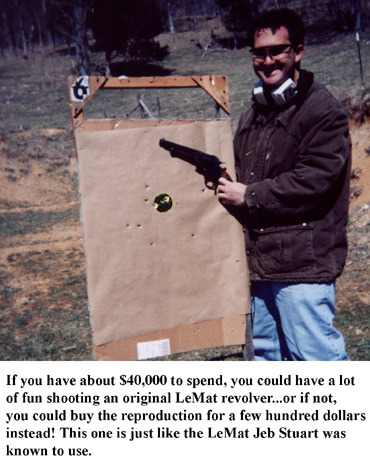 The Reverend Alexander Forsyth’s invention of the percussion cap in the early 19th century was a seminal event in the history of firearms technology. In subsequent years inventors adapted it to repeating weapons, none more successfully than Sam Colt did in his revolving pistols. These key innovations solved two major design problems: reliable ignition and a practical design for a multi-shot handgun. The heyday of percussion revolvers was relatively brief, and they can be regarded as a short-lived transitional technology in the development of modern firearms and self-contained ammunition: but because percussion revolvers are so closely associated with
The Reverend Alexander Forsyth’s invention of the percussion cap in the early 19th century was a seminal event in the history of firearms technology. In subsequent years inventors adapted it to repeating weapons, none more successfully than Sam Colt did in his revolving pistols. These key innovations solved two major design problems: reliable ignition and a practical design for a multi-shot handgun. The heyday of percussion revolvers was relatively brief, and they can be regarded as a short-lived transitional technology in the development of modern firearms and self-contained ammunition: but because percussion revolvers are so closely associated with
If only we could! But the prices of original percussion revolvers in any condition, let alone shootable ones, are astronomical now; moreover, such originals go up in value steadily, as a glance at major auction catalogs will show. An original Walker Colt—if you could find one for sale, and of which perhaps 30 exist—is easily worth $100,000 or more. One in shootable condition could not be had for under a quarter of a million dollars, and no one in his right mind would try to shoot it even if he could afford to buy it. Even the relatively common Colt Model 1860 Army or Remington Model 1858 revolvers in good shape will fetch prices of $3000 or better. They’re simply out of reach of people who live in the Real World.
Anyone interested in the technical and historic aspects of these guns should consider assembling a collection of replica versions instead. They’re affordable, usable, as functional and attractive as the guns of yesteryear they duplicate—and becoming collectible in their own right. They provide the fun of shooting “old style” along with a history lesson; they’re also significant for the development they represent in gun-making methodology.
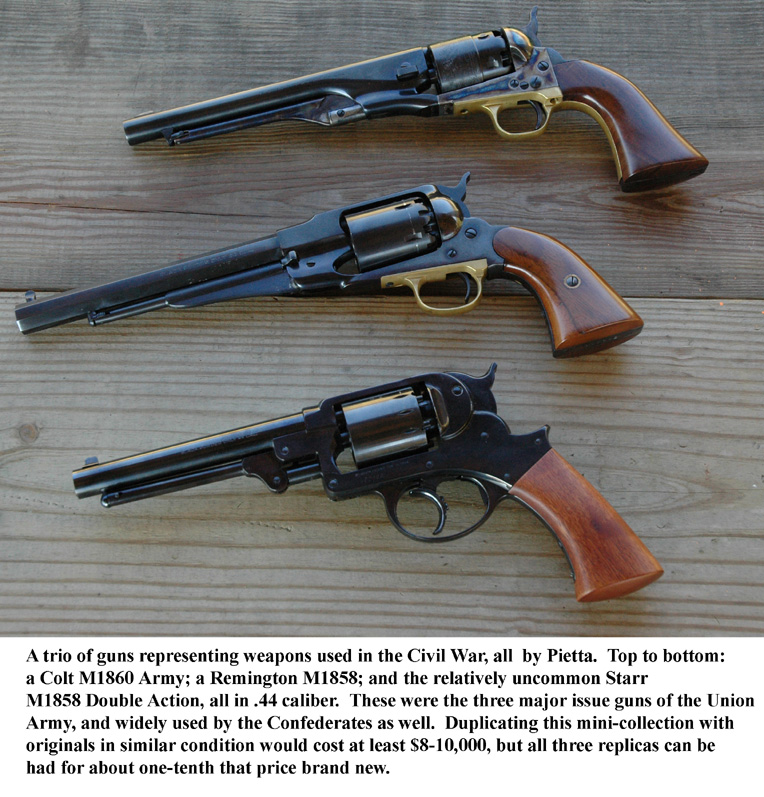 Though awareness of the collectability of replica revolvers is increasing, prices are still reasonable even for perfect examples of highly-sought after models. A mint-condition cased set of Colt “Second Generation” guns will sell for far, far less than a pair of beaten-up originals. Kept in pristine condition the replica guns will likely appreciate in value as fast as the originals would, though would always sell for less. Even “shooters” when properly maintained, can appreciate significantly. In short, a collection of good quality replicas with appropriate accessories and accoutrements is an excellent investment that real people with real jobs can afford.
Though awareness of the collectability of replica revolvers is increasing, prices are still reasonable even for perfect examples of highly-sought after models. A mint-condition cased set of Colt “Second Generation” guns will sell for far, far less than a pair of beaten-up originals. Kept in pristine condition the replica guns will likely appreciate in value as fast as the originals would, though would always sell for less. Even “shooters” when properly maintained, can appreciate significantly. In short, a collection of good quality replicas with appropriate accessories and accoutrements is an excellent investment that real people with real jobs can afford.
Several far-sighted individuals in the 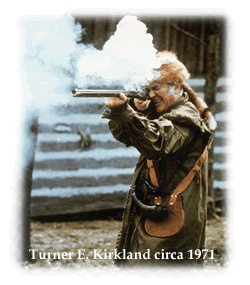 Works, right) saw an opportunity. With the first year of the US Civil War Centennial (1960) looming, they recognized that the historic significance of that anniversary was creating a market for usable replica guns. Their companies and others entered into negotiations with a number of gunmakers in the Gardone region of northern
Works, right) saw an opportunity. With the first year of the US Civil War Centennial (1960) looming, they recognized that the historic significance of that anniversary was creating a market for usable replica guns. Their companies and others entered into negotiations with a number of gunmakers in the Gardone region of northern 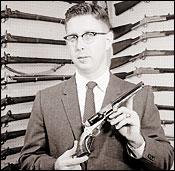 from
from
One reason replica black powder guns remained popular is because—like the originals—they are considered “antiques” under Federal and most state laws; hence there is no paperwork needed to buy one. They can be purchased directly from the seller (even by mail order) with no licensed dealer involvement and no Form 4473, because they’re totally exempt from the provisions of the Gun Control Act of 1968 and its administrative regulations. Except in a few states, owning and shooting them is uncomplicated.
Today’s replicas are made of better materials using more modern methods of manufacture, and are more consistent in quality and reliability than the 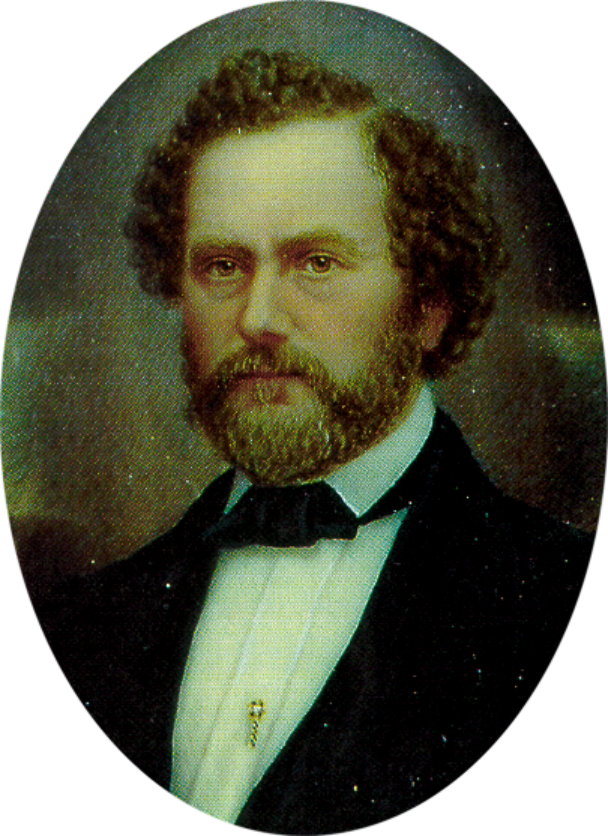 originals. Sam Colt was a brilliant man and he made great guns, but he understood his limitations. In a legendary demonstration at the Crystal Palace Exhibition of 1851 in
originals. Sam Colt was a brilliant man and he made great guns, but he understood his limitations. In a legendary demonstration at the Crystal Palace Exhibition of 1851 in
As with any other aspects of collecting, if you’re contemplating getting into the field, there are many things to be considered besides the specific design being copied. The value of a replica revolver (to an even greater extent than is true of originals) depends in large measure on who made it, and less importantly, when. Current production guns are somewhat better made and more consistent than guns made 40 years ago, because manufacturing methods and quality control have improved and the manufacturers have gained much more experience since the 1960’s.
Some manufacturers have a “name” and their products command a higher price than those similar products by someone else. Nowadays the “name” in replicas is Uberti; for many years this company (which was one of Navy Arms’ earliest suppliers: many older Navy Arms guns carry Uberti logos but not the name) has held a dominant position in the replica business. Identical guns by Uberti and one of its rivals will command different prices, with Uberti’s invariably higher: fit-and-finish and overall craftsmanship of Uberti guns is pretty well regarded as the best of the various Italian producers. They were good enough to be the actual manufacturers of the “Second Generation” or “Signature Series” Colt replicas offered some years back. Colt’s advertising implied (without actually saying so) that the guns were made in the
Many other Italian firms, some still in the business, some who have disappeared, have made percussion revolvers. Armi San Marco and Armi San Paolo are two more well-known brands, if less often seen and not so highly valued as the two big firms. The less-well-known manufacturers often make (or made) “private label” guns for large retailers or small runs of specialty products for importers who sell under their own brand name (Palmetto Arms,
Nevertheless, because the replica revolver business has now been up and running for almost half a century some of the small early importers no longer exist and guns with their names are part of the history 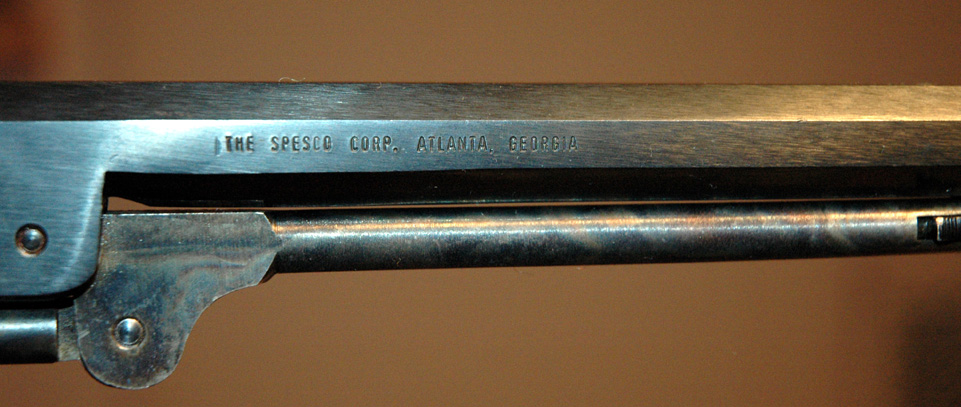 of the replica industry. A lot of small firms got out of the game if their sales began to slack off after the Civil War centennial ended, or if they couldn’t compete with the bigger players, so guns with names of defunct companies are relatively scarce. The “SPESCO” company of
of the replica industry. A lot of small firms got out of the game if their sales began to slack off after the Civil War centennial ended, or if they couldn’t compete with the bigger players, so guns with names of defunct companies are relatively scarce. The “SPESCO” company of

Original percussion revolvers were often sold cased with accessories, all the stuff needed to make them go BANG: a powder flask, nipple wrench, cap tins, bullets, oil bottle, etc. Relatively few such cased sets are sold today, but some, especially commemoratives, are on the market. These are of significant interest to collectors, and considered as a whole, make very desirable additions to a collection. An original cased Colt Walker with accessories could sell for upwards of half a million dollars, but the Armi San Marco-made example shown here went for less than $300 on Auction Arms! The catalog prices of the accessories and the case, leaving the gun out of the equation, make this a very good buy, and one not likely to make your theft insurance rates go through the roof.
Percussion revolvers had a short “lifespan” as the zenith of firearms technology, but they bridged the gap between the Revolutionary-era flintlock and guns using self-contained fixed ammunition. And…like the originals, they represent a period when our nation was growing and the extent of American economic and military power was as yet incompletely realized, a time when the country faced challenges to its very existence that were solved by the ingenuity, and creativity of some of the most fertile minds of the 19th Century.
|SEASON LOGS |
| HUNTING | GUNS | DOGS |
| FISHING & BOATING | TRIP REPORTS | MISCELLANEOUS ESSAYS |
| CONTRIBUTIONS FROM OTHER WRITERS|
| RECIPES |POLITICS |